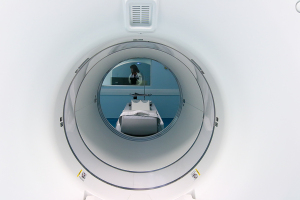by
John R. Fischer, Senior Reporter | December 19, 2023

Venture capital investment in radiopharmaceuticals has risen over 500% in the last five years.
In the past five years, venture capital investments in U.S. radiopharmaceutical startups and emerging companies have skyrocketed 550%, driven by advancements that have increased the precision and efficacy of these solutions in treating cancer, including theranostics.
According to data and analytics firm GlobalData, VC investments in the space rose from $63 million in 2017 to $408 million in 2023, year-to-date. Some recent and notable examples include Eli Lilly (Lilly), which invested $175 million into Mariana Oncology’s Series B financing for its preclinical drug, MC-339, a targeted peptide-based radiopharmaceutical that treats small cell lung cancer with actinium. Clinical trials for the drug are expected to begin in 2024.
"The radiopharmaceutical sector has not only experienced a surge in technological advancements, an increasing number of product approvals, and a rise in M&As and strategic collaborations, but also the rising incidence of cancer and the range of radioisotopes available has driven a surge in the use of radiopharmaceuticals for therapeutic applications. These developments are gaining increasing interest among VC investors," Ophelia Chan, business fundamentals analyst at GlobalData, told HCB News.



Ad Statistics
Times Displayed: 656
Times Visited: 5 Fast-moving cardiac structures have a big impact on imaging. Fujifilm’s SCENARIA View premium performance CT brings solutions to address motion in Coronary CTA while delivering unique dose saving and workflow increasing benefits.
Together, U.S.-based radiopharmaceutical companies secured $1.2 billion in total venture financing during this time, peaking at $262 million in 2021 solely within the preclinical and discovery stages of the development process. Venture financing was highest for both of these stages, with eight preclinical deals and six discovery stage agreements collectively worth $565.5 million and $523 million, respectively.
One notable driver has been theranostics, which uses the same molecule or a pair of two different molecules to diagnose and precisely eliminate cancer. The integration of diagnostic and therapeutic functions in a single agent has enabled researchers to gain insights into the in vivo nature of radiopharmaceuticals, helping them optimize formulas and delivery methods to reduce adverse effects and monitor treatment responses.
Investor interest here heightened in 2017 with the EMA approval of Lutathera (lutetium Lu 177 dotatate), the first radiopharmaceutical by Novartis subsidiary Advanced Accelerator Applications and a main component of a theranostic care regimen for treating neuroendocrine gastroenteropancreatic tumors; followed by the 2018 FDA approval, denoting the safe and highly effective use of theranostics and radiopharmaceuticals in general, according to Chan.
Additionally, she says that despite supply chain challenges and logistical concerns in transport, radiopharmaceutical companies such as Lilly and RayzeBio are increasing clinical trials, funding rounds, and partnerships and expanding their portfolios, many of which are in various clinical stages. This is expected to fuel growing interest among investors. As a result, radiopharmaceuticals are expected to continue growing, alongside the demand for precise and noninvasive diagnostic methods.
"Companies may be diversifying their portfolios to address a broader range of therapeutic applications, which may foster collaborations and innovation. We may also witness optimization of the radiopharmaceutical supply chain, from manufacturing to distribution, to meet the increasing demand for these agents," said Chan.

